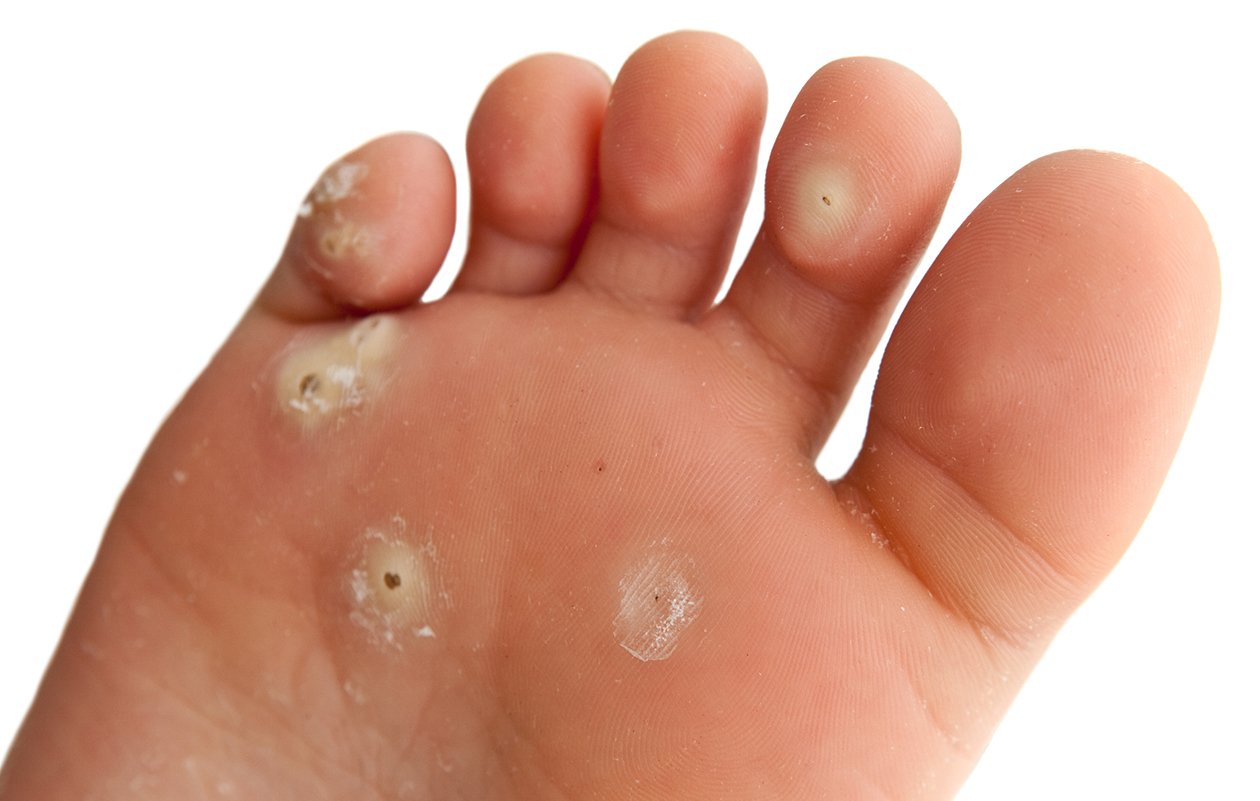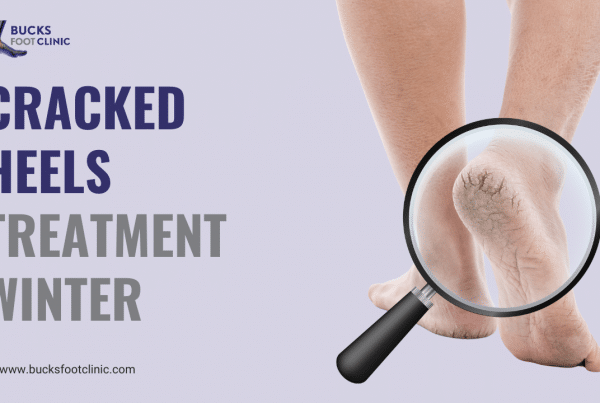
Though they are very common, there are still a lot of questions surrounding verrucas and verruca treatment. As podiatrists, we have extensive knowledge of verrucas and other foot-related issues. We’re here to answer your questions!
In this blog, we’ll touch upon the following topics:
- What are verrucas?
- Verruca symptoms
- How do verrucas form?
- Is a verruca contagious?
- Is a verruca a sore?
- Verruca treatment
Keep reading to learn more.
What Are Verrucas?
Verruca or verruca infections are a virus. It is caused by the Human Papillomavirus (HPV) and is highly contagious. Verrucas on feet are commonly spotted on the soles of the areas around one’s toes. These viruses thrive in moist environments and tend to cyclically be an outbreak in children at the park (like hand, foot, mouth disease). Verrucas tend to look kind of like cauliflowers, but then they flatten up because of pressure when they are on the soles of your feet.
Sometimes verrucas can be painless, but more often than not they are very uncomfortable and even painful to deal with. They can disappear overnight or can be persistent for years on end.
Verruca Symptoms
Chances are you’ve had a Verruca before and just confused it for a corn or a wart. But there are some key identifying factors when it comes to Verrucas which can help you single them out from all these other ailments. Verrucas are actually an infection caused by HPV and can be painful in comparison to normal warts or corns. They tend to form on the soles of your feet and may have tiny black dots in the centre, where blood has clotted in tiny vessels on the surface of your skin. They can be painful when you put weight on them, kind of like stepping on a needle. They also tend to look flat because of the constant pressure put on them. They even develop in clusters in some cases and can fuse together, forming “mosaic warts”. Which, again, sound super fancy, but definitely aren’t a piece you’d put up in an art exhibit. They’re actually kind of grotesque but are totally normal.
To sum it up, you know it’s Verrucas on your feet when:
- There’s a black dot in the centre (in most cases)
- The “wart” is oddly cauliflower-shaped
- You feel a stinging “stepping-on-a-needle” type of pain when you apply pressure
- The lump is small and rough
- You may have multiple on your hands and around your mouth as well (in the case of Hand, Foot and Mouth Disease, or HFM for short, which is common in most children)
How Do Verrucas Form?
As mentioned earlier, verruca infections are caused by the Human Papilloma Virus (HPV). There are lots of old wives’ tales surrounding the causes of verrucae, and the most common one is “swimming pools cause verrucae”. Though this is true, it needs a little more context. Swimming pools themselves do not cause the verruca infection, but since verrucae are highly contagious, it’s very easy to develop verrucae from being in the same swimming pool with someone who is affected.
Cross-infection is very common, and if you have a verruca and you’re walking around barefoot, you’ll probably infect the next barefoot person to walk on the same floor. You can also catch it by direct contact with another person’s verruca. In fact, you can even be contagious to yourself. If you have a verruca, and you touch it and then touch other parts of your body, you’re likely to spread the verruca infection.
Is A Verruca Contagious?
Since verrucas are formed by a virus, they are considered extremely contagious. Verrucas can spread through both, direct and indirect contact. This is why verrucas are commonly seen rapidly spreading amongst children in the playground, in the case of HFM. When someone with a verruca infection touches their verruca and then touches other surfaces, the virus can spread. The virus can also spread through direct contact, and it can also spread to other parts of the same body.
Is A Verruca A Sore?
Another very common question people ask is “Is a verruca a sore?”. Verrucae aren’t really sores, but they can cause a feeling of soreness on your feet due to their uncomfortable positioning. In reality, verrucae are a type of wart that are formed by the HPV virus and they tend to be very contagious.
Verruca Treatment
Now that you know a lot more about verrucas on feet and what causes them, you’d probably want to know how to go about verruca treatment.
There are many ways you can go about treating verrucas on your feet. Though they normally go away with time, if you find yourself plagued with verrucas on your feet and they’re either painful or just an eyesore, here’s a few treatments:
1. Home Remedies:
– A great home remedy is taking a piece of banana skin and cutting it to be the same size as the verruca on your feet. Then, go ahead and place the piece of banana skin on the verruca and secure it with a plaster. Do this for about two weeks, every night before bed.
– Garlic is an all-around cure-all and is generally just really good for your health. You can use garlic to treat your verruca as well. Take a piece of garlic and put it over your verruca infection and secure it with a plaster. If you do this daily for a month, your verruca should go away.
– A study was done in which it was proven that duct tape surprisingly helps get rid of verrucas. Take a piece of duct tape and cover your verruca with it, and it should go away in a few weeks.
2. Medication:
– There are many creams, medicated plasters, and gels that you can use to aid the treatment of your verruca. Most of these are readily available as over-the-counter products, so you can get them at your local pharmacy.
– Salicylic acid is the key ingredient in all of these products and this is what actually treats your verruca. It helps soften the verruca significantly.
– Never use salicylic acid products on your face because that can lead to some really bad scarring. Also, if you have pre-existing medical conditions like diabetes, consult your doctor before using these products.
3. Cryotherapy:
Cryotherapy is a very effective way to remove your verruca. It is the process in which your verruca is frozen with liquid nitrogen, which makes it fall off. If you’re interested in cryotherapy, please visit a podiatrist and never try to do this on your own. It can lead to scarring and is typically also mildly painful, so it’s not a great option for children and people who are sensitive to pain.
4. Check In With Your Podiatrist:
The best way to treat anything related to your feet is by visiting a podiatrist. They are experts at all things foot-related and will be able to treat your verruca with ease and painlessly. When you visit a podiatrist, they will most likely use SWIFT Machine Treatment to get rid of your verruca. SWIFT is a very quick and efficient way to treat verrucas, it’s in the name itself! SWIFT uses microwave energy for verruca removal.
Conclusion
If you think you’re dealing with verrucas on your feet, don’t hesitate to seek help. Instead of suffering the soreness and the possibility of recurrence, visit a Podiatrist to help you deal with it permanently.
At Bucksfoot Clinic, we offer the best podiatric services. Contact us to book an appointment!
Please call us on 0800 107 3290 / 077 99 122 099 Or contact us now



